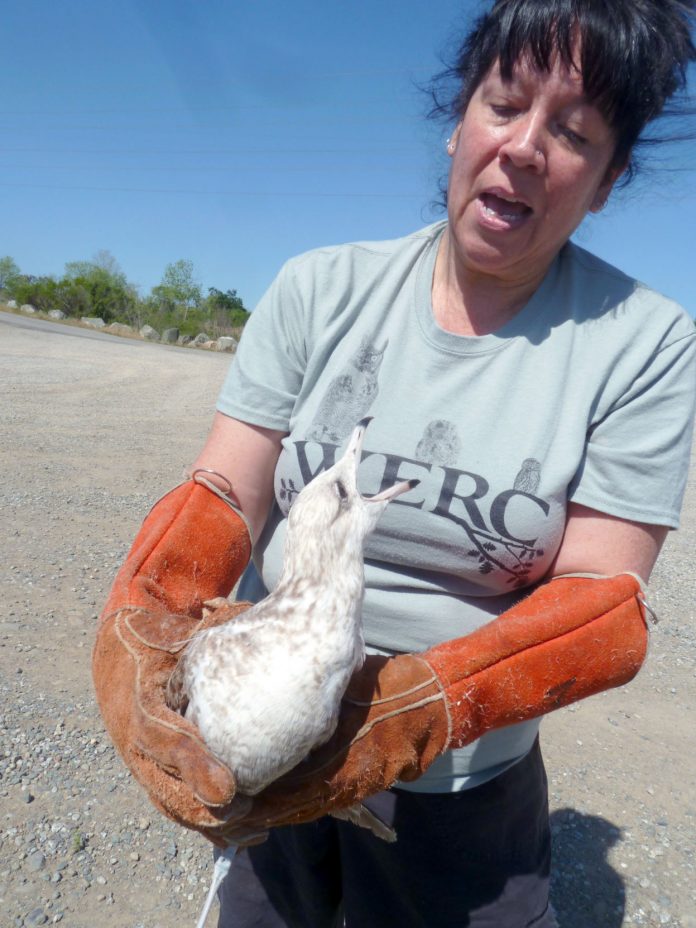
A resident in a north Morgan Hill neighborhood glanced into her backyard and discovered a California gull running around in circles and thought that maybe it was injured or sick. So the kind lady captured the bird and quickly brought it to the Wildlife Education and Rehabilitation Center. WERC staff could find no obvious injuries and the bird acted very alert and feisty. It was transferred to a flight enclosure with a small swimming pool. And then it became immediately apparent that the gull was actually just a big baby, although adult-sized and fully feathered and “thisclose” to flying.
California gulls can be found from the Pacific coastline to northern Mexico to British Columbia. They are omnivorous and opportunistic scavengers that in the wild eat pretty much whatever is available, including fish, carrion, other birds’ eggs, and human food found at garbage dumps, piers, landfills and picnic areas. They follow farmers plowing in fields, consuming the insects that are stirred up. In fact, the gull’s family name is “Laru,” a Greek word meaning “ravenous sea bird.”
At WERC, the young gull was fed a variety of natural foods, including sardines and mealworms—a special treat he eagerly devoured. Within one day of arrival, the gull was flying around the enclosure. A few days later, on a clear and balmy day, he was released at a prime habitat—a local waterbird reserve. He stood near the pond’s edge for a few seconds, pondering his freedom, then soared off to join a nearby squawking flock (aptly called a “screech” or “squabble”) of gulls spiraling in the wind currents above us.
By the way, don’t be gullible…don’t call them seagulls. It’s a common misnomer. There are more than 50 species of gulls in the world, including Laughing Gulls, Bonaparte’s Gulls, Ring-Billed Gulls and Dolphin Gulls. Certainly, there are gulls that live by the sea, but there is no such species
as seagulls.
Speaking of gullibility—don’t be fooled by birds you may find on the ground, especially during spring and early summer. Just like this gull, the grounded bird may actually be a baby that is being cared for by parents and will soon fly away. WERC has received many calls about “injured” non-flying crows and other birds that look like adults but have short tails. Leave them alone, but bring your cats and dogs inside until the babies have gone. If it is obvious that the bird is injured or neglected or if you are unsure, call WERC or another wildlife rehabilitation facility for help or advice.
Colleen Grzan represents the Wildlife Education and Rehabilitation Center, which rehabilitates native wildlife. WERC is supported solely by donations from businesses and the public. For more information, call (408) 779-9372 or go to www.werc-ca.org.







